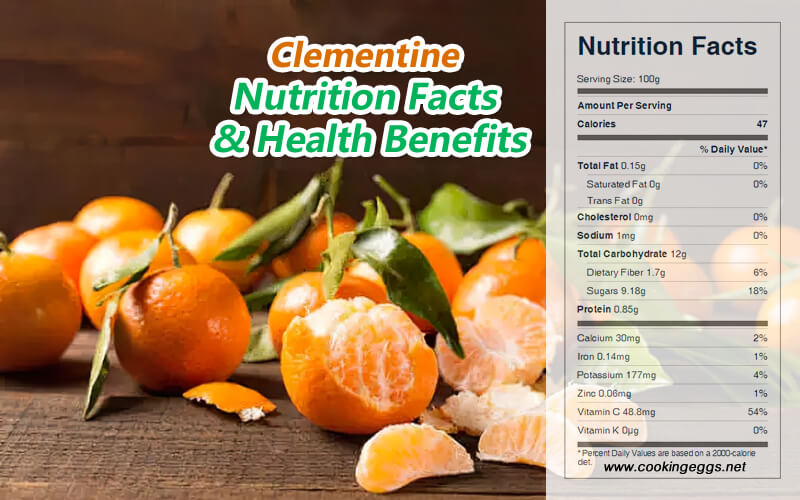Clementines Nutrition Facts & Health Benefits
The clementine is a citrus fruit hybrid that is a cross between a sweet orange and the willowleaf mandarin. The exterior is similar to tangerines and tends to be easy to peel. The flesh is typically juicy and sweet.
The base of the clementine fruit is usually rounded and sometimes collared or necked. The apex is depressed. The rind is moderately firm and adherent, easy to peel, and medium in thickness. The peel color ranges from deep orange to reddish-orange, and the flesh color is deep orange. The flesh is tender and melting, juicy, subacid, and pleasantly aromatic. The essential oil has a typical deep yellow color and its odor is very delicate, resembling that of sour orange.
Nutritional Value of Clementines
A clementine contains 87% water, 12% carbohydrates, and negligible amounts of fat and protein. Among micronutrients, only vitamin C has significant content, with all other nutrients in low amounts.
In a 100-gram reference amount, raw clementine supplies 47 calories, 12 g carbohydrate, 0.85 g protein, 0.15 g fat, 1.7 g dietary fiber, 48.8 mg vitamin C, 24 mcg folate, 177 mg potassium, 1 mg sodium, 0.14 mg iron, and 30 mg calcium.

Clementines Nutrition Facts Label
Health Benefits of Clementines
Clementine fruit contains high levels of vitamin C. It plays a major part in reinforcing immune defense mechanisms. The intake of vitamin C prevents scurvy and contributes to resistance against infectious agents. Vitamin C also helps to prevent DNA damage caused by free radicals and reduces their harmful effects on plasma lipoproteins.
Clementine contains higher levels of carotenoids, predominantly -carotene, lutein, -carotene, -cryptoxanthin, and violaxanthin. They are pigments that are involved in vision and which prevent macular degeneration. High carotenoid diets helped reduce symptoms of eyestrain (dry eyes, headaches, and blurred vision) and improve night vision, and can act as a free radical scavenger when combined with other carotenoids.Also, the lipophilic antioxidant activity of -carotene is associated with the ability to induce protection against ionizing radiation, a-singlet oxygen neutralizing capacity, and a peroxyl radical neutralizing capacity.
Potassium is the major nutrient element in clementine juices and is present at an average value of 153.7 mg/100 mL. Potassium has a major role in the maintenance of fluid and electrolyte balance. Diets low in potassium increase the risk of hypertension, stroke and ardiovascular disease.
Clementine is a very rich source of flavonoids and phenolic compounds, namely quercitrin, rutin, and quercetin. Its peel has a high antioxidant capacity. Polyphenols are considered a more potent antioxidant than vitamins C and E. They may improve some features associated with overweight and obesity, such as metabolic syndrome, cardiovascular risk factors, lipid peroxidation, and inflammation.
Flavonoids are plant substances that appear in clementines and lower bad cholesterol levels. Thus, clementines help prevent the appearance of cardiovascular diseases and ensure proper vascular deployment in the heart.